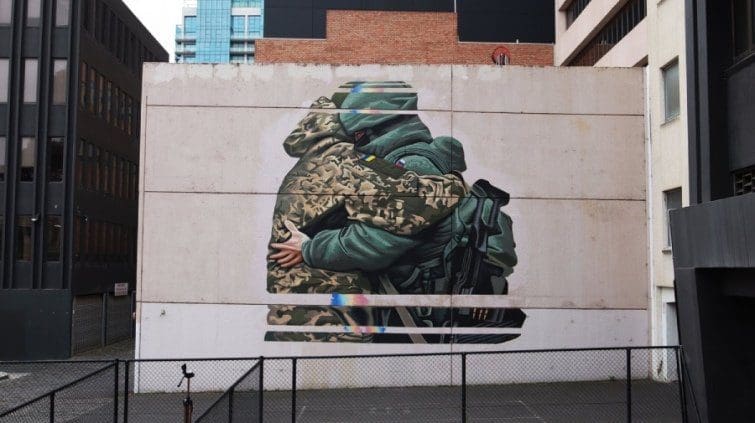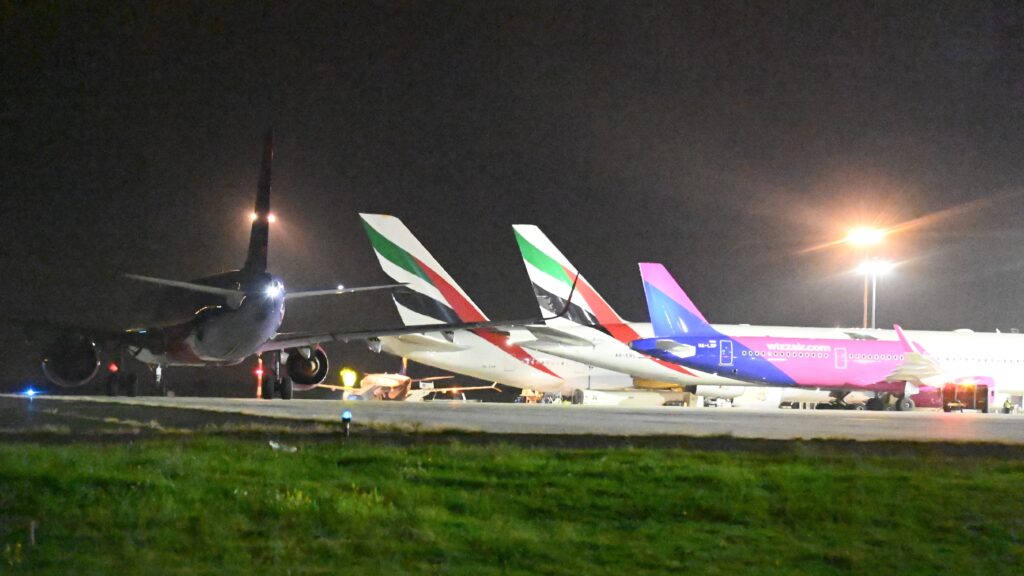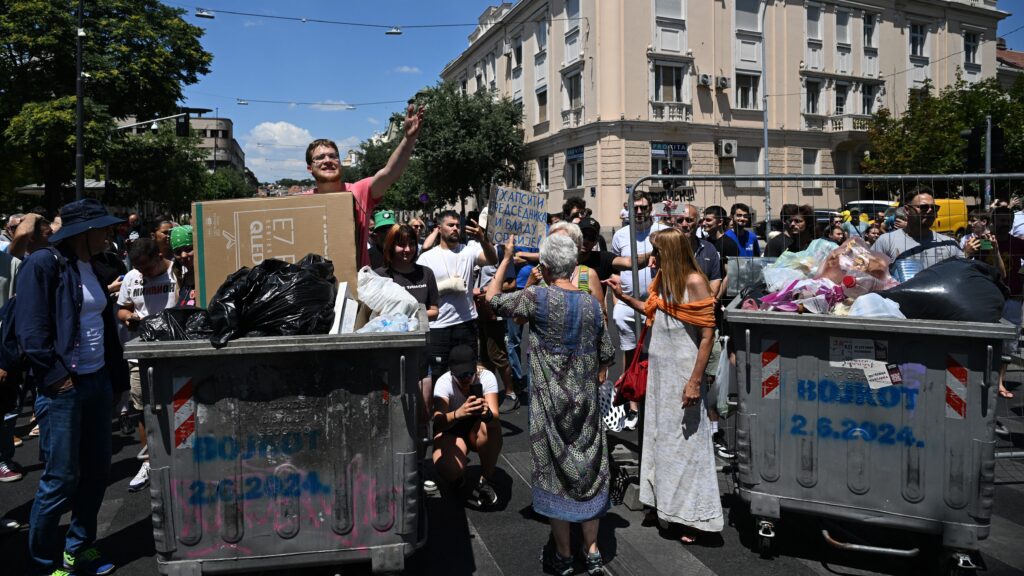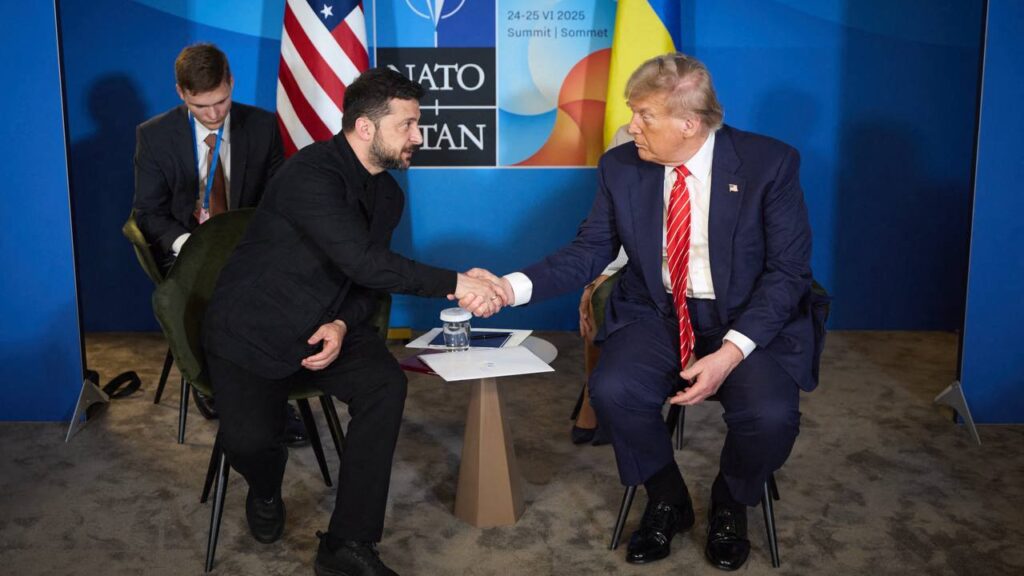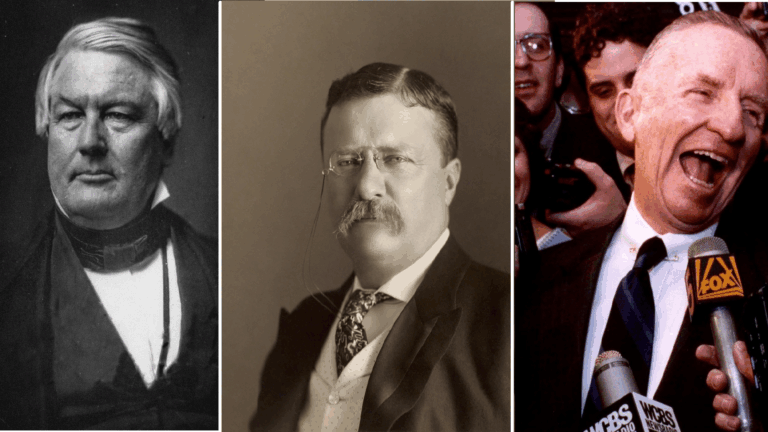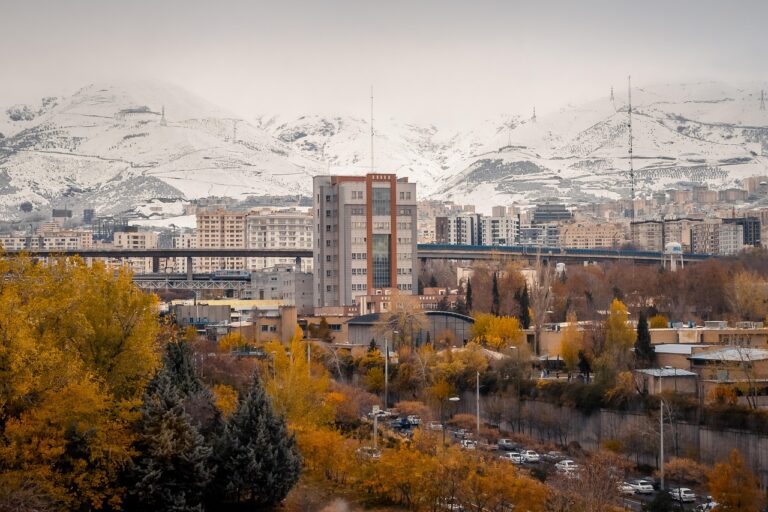A couple of days ago a new three-storey graffiti appeared on a house in Melbourne near the city’s central business district. The mural, called Peace before Pieces, pictured a Ukrainian and a Russian soldier hugging each other. The mural sparked a worldwide scandal right after it was revealed. Ukraine’s ambassador to Australia Vasyl Myroshnychenko labelled the graffiti ’offensive’ to ‘all Ukrainians’ and called for removing it. Myroshnychenko said in his Tweet that ‘the mural creates a sense of a false equivalency between the victim and the aggressor’. Adding to the ambassador’s criticism, Stefan Romaniw, the co-chair of the Australian Federation of Ukrainian Organisations said that ‘trying to be “even-handed” and accepting a false narrative that “all we need is peace” in this case supports evil’. The Russian Embassy in Australia also had a word on the removal of the painting. In a Telegram post the Embassy ironically wrote that in Australia the ’New normal for freedom of artistic expression’ is to first ‘check with the Embassy of Ukraine before you start painting’.
1/ A recently unveiled mural in @Melbourne showing a RU and a UA soldier hugging is utterly offensive to all Ukrainians. The painter has no clue about the RU invasion of Ukraine and it is disappointing to see it done without consulting the Ukrainian community in Melbourne. pic.twitter.com/TCG6s7W9SJ
— Vasyl Myroshnychenko (@AmbVasyl) September 3, 2022
Addressing the concerns, the artist, Peter Seaton who works under the pseudonym CTO, removed the mural and apologized for the offence saying that he wanted ‘to promote peace’ with his painting. According to the artist’s original plan the profit made from the small replicas of the mural would have gone towards funding the World Beyond War, a war abolition organization. Addressing the criticism his artwork received, he said that he would not have worked on the mural for ten days if he had known that it will cause such an offence. He admitted that the portray was ‘a little naïve’ but he maintained that his artwork intended to depict the oneness of humankind. ‘There is an element of war which is about dehumanising the opposition. My artwork was only about bringing the human element to both of these warring factions’, added Seaton. He also denied the accusations that he is associated with some Russian organizations, and that he created the mural to serve Russian propaganda purposes.
While, on the one hand, concerns about the mural are understandable, there is a case to be made that it was appropriate. As the war progresses, there are examples of descent within the Russian army, servicemen who embrace the message of the mural. From dissidents, Pavel Olegovich Filatyev who was a Russian soldier, serving in one of the initial ground invasion troops in the first two months of the war, became the most famous in the last couple of months. Filatyev is from a military family, both his father and grandfather served in the Soviet and then Russian army. While he has strong patriotic feelings, after being injured in Ukraine, Filatyev confronted his own role in the invasion. He wrote a memoir called ZOV, in which he claimed that Russia ‘had no moral right’ to invade Ukraine. In an interview he emphasized that as a patriot whose family members dedicated their lives to serving Russia, it is very difficult for him to say negative things about the Russian army. But he made a commitment to tell the truth, both good and bad about what is happening in Ukraine, and he has reached the conclusion that the war is not in the interest of either side, and Russia had no moral right to invade. He highlighted that he had received a lot of letters and messages from Ukrainian soldiers thanking him for standing up for truth. He emphasized that those who stand in the front lines (on both sides of the war) sympathized with his position more than civilians who called him a traitor (Russian civilians) or a murderer (Ukrainian civilians). Filatyev could leave Russia with the help of some human rights organizations.

